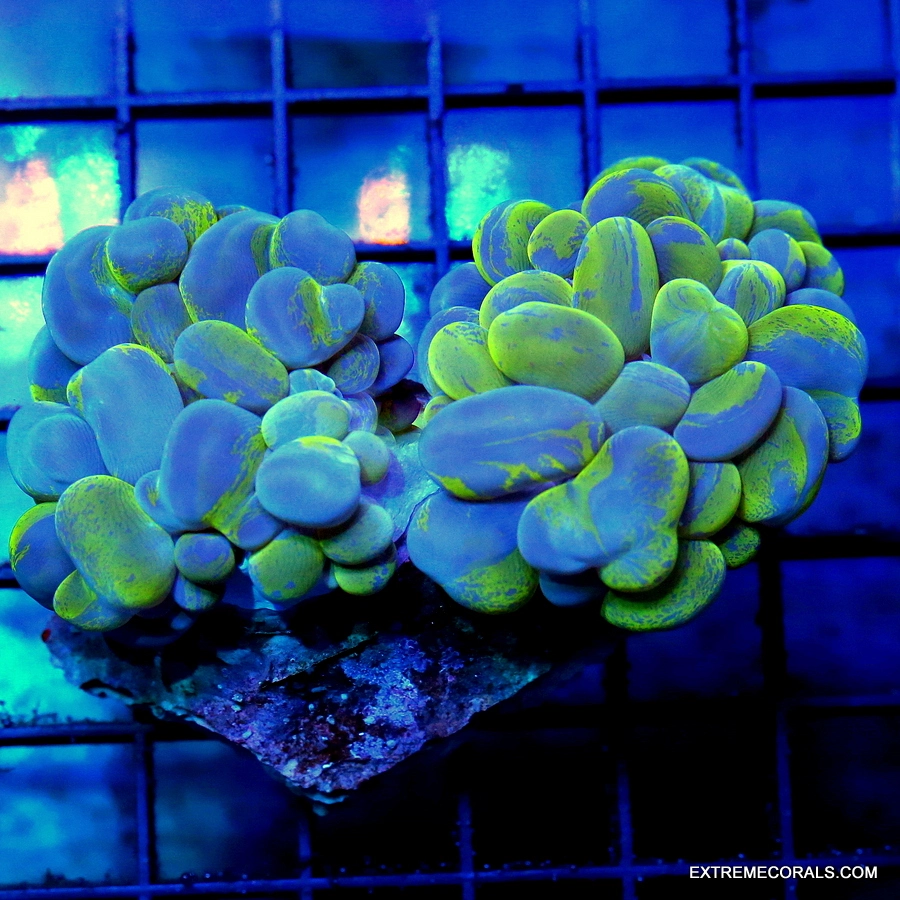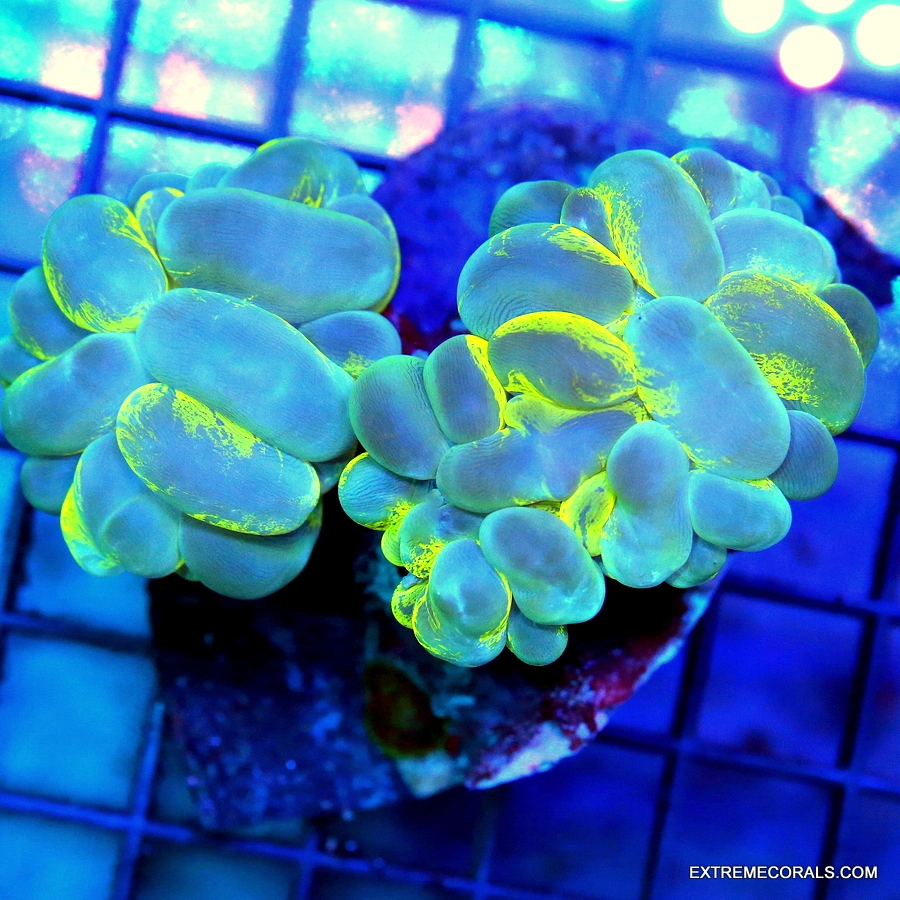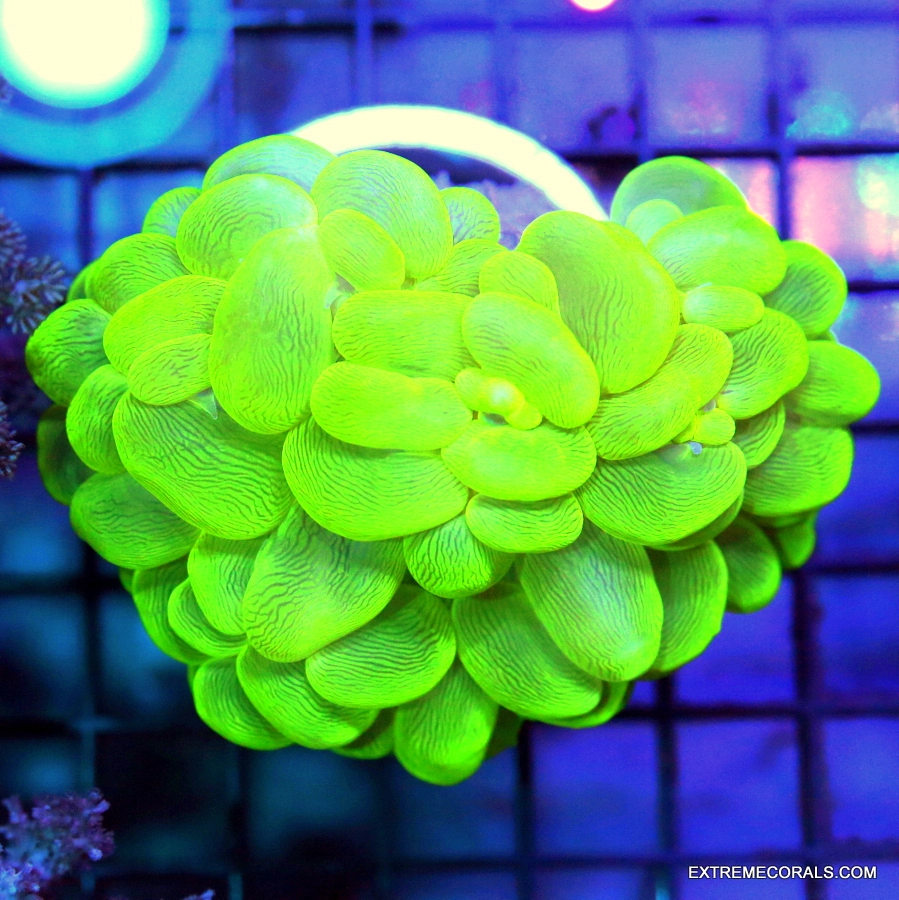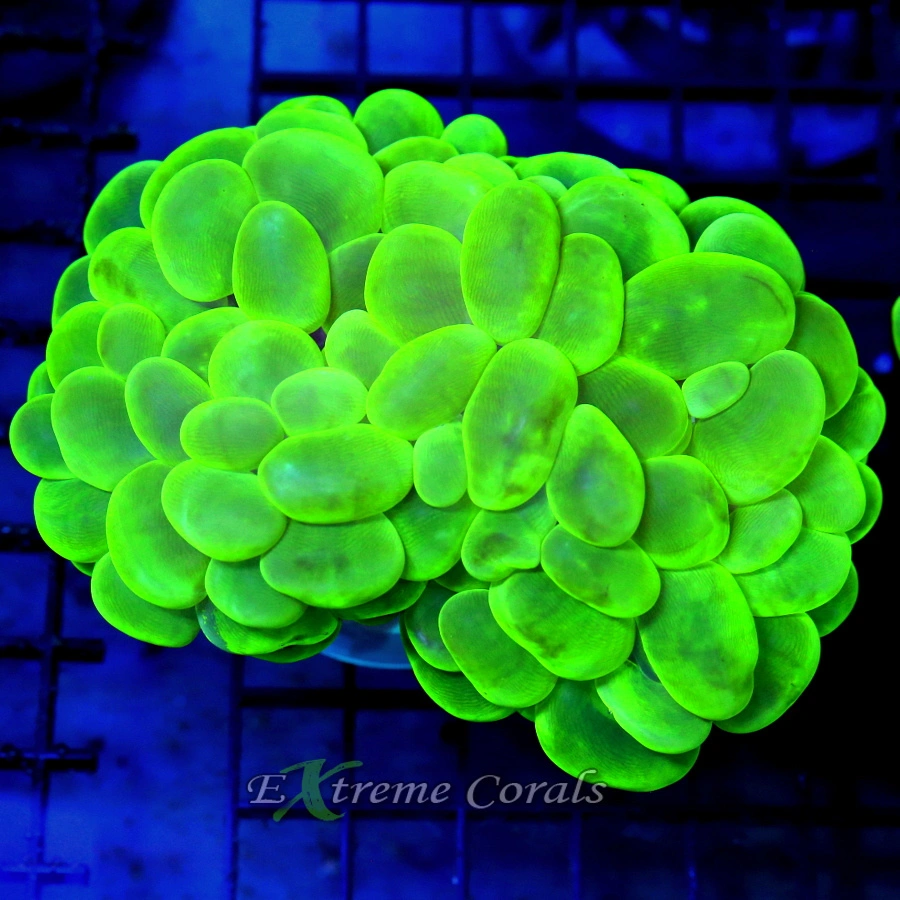Extreme Corals News and Updates
Understanding the Unique Habitat Needs of Bubble Coral
Explore the habitat needs of bubble coral and enhance your understanding with our blog, 'Understanding the Unique Habitat Needs of Bubble Coral'.
Learn about Bubble corals with its distinctive bubble-like appearance. Found in the Indo-Pacific, it's a popular choice for reef enthusiasts due to its beauty and low maintenance.
by scott Shiles • May 16, 2024
What is bubble coral?

Bubble coral is a Large Polyp Stony coral that belongs to the genus Plerogyra. It is commonly found in the Indo-Pacific region, typically in areas with moderate to strong water flow and bright light. Bubble coral is known for its bubble-like appearance, which is created by round vesicles that cover its skeleton. These vesicles expand and contract, giving the coral a unique and textured look. Bubble coral is a popular choice among reef enthusiasts due to its distinct appearance and relatively low maintenance requirements.
Types of bubble coral species
Bubble coral comes in various types, such as Plerogyra, Physogyra, and Bubbly pointy-tip. Each species has distinct features and growth patterns, so it's essential to understand these differences when caring for bubble coral in your aquarium.
Ideal habitat conditions for bubble coral
Bubble corals thrive in dimly lit environments with moderate water flow. They prefer stable temperatures between 75°F and 82°F. The ideal pH level for their habitat ranges from 8.1 to 8.4 to maintain their health. Additionally, it's essential to place them in an area with low to moderate water movement to prevent damage to their delicate structures. Adequate space between them and other corals is also necessary to avoid any potential territorial conflicts.
Importance of proper lighting for bubble coral

Proper lighting is crucial for bubble coral to thrive in aquariums. Bubble coral requires specific light conditions to photosynthesize and grow. LED lights are often recommended for providing the right spectrum and intensity of light for bubble coral. Insufficient light can cause the coral to lose its vibrant colors and may lead to poor health. Consistent lighting schedules mimic natural conditions and help maintain the coral's well-being.
Water quality requirements for bubble coral
Bubble coral requires excellent water quality to thrive in your aquarium. Here are some essential points to consider:
Maintain stable water parameters such as temperature, pH, and salinity to ensure a healthy environment for bubble coral.
Regularly test the water quality using appropriate kits to monitor levels of ammonia, nitrates, and phosphates.
Provide adequate flow in the aquarium to prevent detritus buildup around the coral, which can lead to poor water quality.
Ensure proper lighting as bubble coral relies on photosynthesis for energy production, so sufficient light is crucial for its health.
Feeding habits and nutritional needs

Bubble coral mainly feeds on small zooplankton and phytoplankton. They also have a unique ability to capture and consume larger food particles. To ensure their optimal health, bubble coral requires a diet rich in plankton and other small organisms. Maintaining proper water flow and quality in the tank is essential for their health as it aids in the distribution of nutrients and ensures they receive ample food supply. Feeding bubble coral 2-3 times a week with a combination of live or frozen plankton is recommended to meet their nutritional requirements. Remember to monitor their feeding response and adjust the feeding schedule accordingly.
Reproduction and growth of bubble coral
Bubble corals reproduce by releasing tiny eggs and sperm into the water, where they fertilize to form larvae. These larvae settle on the ocean floor and develop into new coral colonies. Bubble corals grow relatively slowly, expanding their size over time by adding more bubbles to their structure. Proper lighting and water flow are essential for the healthy growth of bubble corals, as they rely on symbiotic algae for energy through photosynthesis. Keep in mind that sudden changes in water parameters or temperature can stress bubble coral, affecting their growth and reproduction.
Common challenges and diseases affecting bubble coral
Bubble coral faces various challenges and diseases due to water quality issues and improper care. Here are some common problems:
Bleaching: Caused by stress from changes in water temperature or lighting.
Brown Jelly Disease: Bacterial infection that appears as a brown slime on the coral.
Algae Overgrowth: Competes with the coral for space and nutrients, hindering its growth.
To ensure the health of your bubble coral, maintain stable water parameters, adequate lighting, and regular cleaning of algae.
Tank mates and compatibility with bubble coral

Bubble coral can coexist with peaceful fish species like clownfish, gobies, and tangs. Avoid aggressive fish as they may harm the delicate coral. Invertebrates such as shrimp and crabs are generally safe tank mates. Proper spacing between bubble corals and other inhabitants is crucial to prevent territorial conflicts. Remember, research your potential tank mates to ensure a harmonious aquatic environment.
Conservation efforts for protecting bubble coral habitat
Conservation efforts are essential to protect the habitat of bubble coral. Pollution and overfishing are major threats to bubble coral. Here are some ways to help protect their habitat:
Reduce pollution: Properly dispose of waste and chemicals to prevent contamination.
Support Marine Protected Areas: Encourage the establishment of marine reserves to safeguard coral reefs.
Promote Sustainable Fishing Practices: Advocate for responsible fishing techniques to prevent habitat destruction.
Raise Awareness: Educate others about the importance of preserving bubble coral habitats to inspire action.

